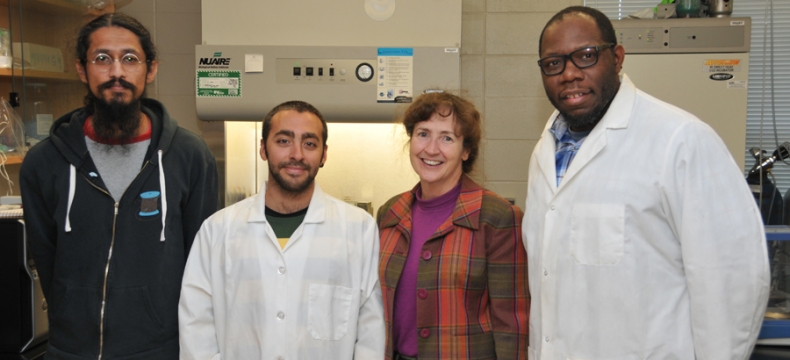
Faculty Duo’s Research Awarded $700,000 NSF Grant
|
|
The National Science Foundation has awarded DSU’s Neuroscience Program a three-year $700,000 grant in support of a faculty collaborative research project pertaining to motor neurons.
The research project is a collaboration between Dr. Melissa Harrington, professor of biological science, director of the Delaware Institute of Science and Technology and principal investigator of the grant, and Dr. Tomasz Smolinski, associate professor of computer and information science and co-PI of the grant.
According to Dr. Harrington, the research focuses on how the efficiency of motor neurons in driving muscle contractions that can be altered depending on the previous activity of the motor system has been.
“We are mimicking the effect of endurance training and seeing how that affects the level of electrical excitability in motor neurons. More excitable neurons can drive muscle contraction more easily,” Dr. Harrington said. “If we are ever going to have truly natural prosthetics that can be manipulated by commands from our nervous system, we need to understand in detail how the functioning of motor neurons is changed by increased and decreased activity.”
Dr. Harrington and Dr. Smolinski are being assisted in the research by three post-doctorates – Dr. Dwight Higgins, Dr. Joseph Lombardo and Dr. Arumugarajah Tharaneetharan.
While the grant award is administered by the NSF, it is actually a funding collaboration between the NSF, the National Institutes of Health, the German Federal Ministry of Education and Research, the French National Research Agency, and the U.S.-Israel Binational Science Foundation. Together the entities form the Collaborative Research in Computational Neuroscience Program, which supports activities that will advance the understanding of the nervous system structure and functions, mechanisms underlying nervous system disorders and computational strategies used by the nervous system.


 Dr. Melissa Harrington (l), the grant's principal investigator, and Dr. Tomasz Smolinski are collaborating on the NSF-funded research project.
Dr. Melissa Harrington (l), the grant's principal investigator, and Dr. Tomasz Smolinski are collaborating on the NSF-funded research project.